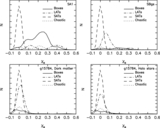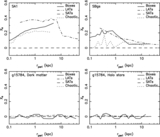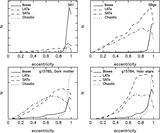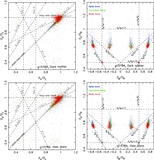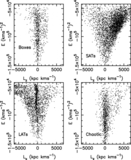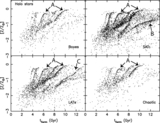Image Details
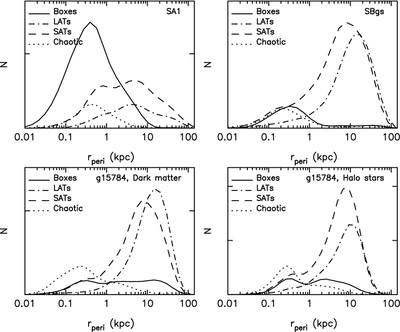
Caption: Figure 2.
Kernel density distributions of orbit types as a function of orbital pericenter distance r peri for 10 4 halo particles in three simulations. In each panel the vertical axis is proportional to the number of orbits with a particular value of r peri, i.e., the sum of integrals over all curves in a panel is equal to the total number of orbits. Top left: orbits of dark matter particles from adiabatic N-body simulation SA1 (triaxial dark matter halo with stellar disk). Top right: orbits of dark matter particles from adiabatic simulation SBgs (prolate dark matter halo with stellar disk formed from hot gas). Bottom left: dark matter particles in cosmological simulation g15784. Bottom right: halos stars in g15784. Line styles indicate the four major orbit families. Only orbits with periods shorter than 2.5 Gyr were selected. In the top two plots the spatial gravitational softening length is 0.103 kpc, while in the bottom two panels it is 0.3125 kpc. The orbital distributions below the softening radius in each model are unreliable.
Copyright and Terms & Conditions
© 2013. The American Astronomical Society. All rights reserved.



